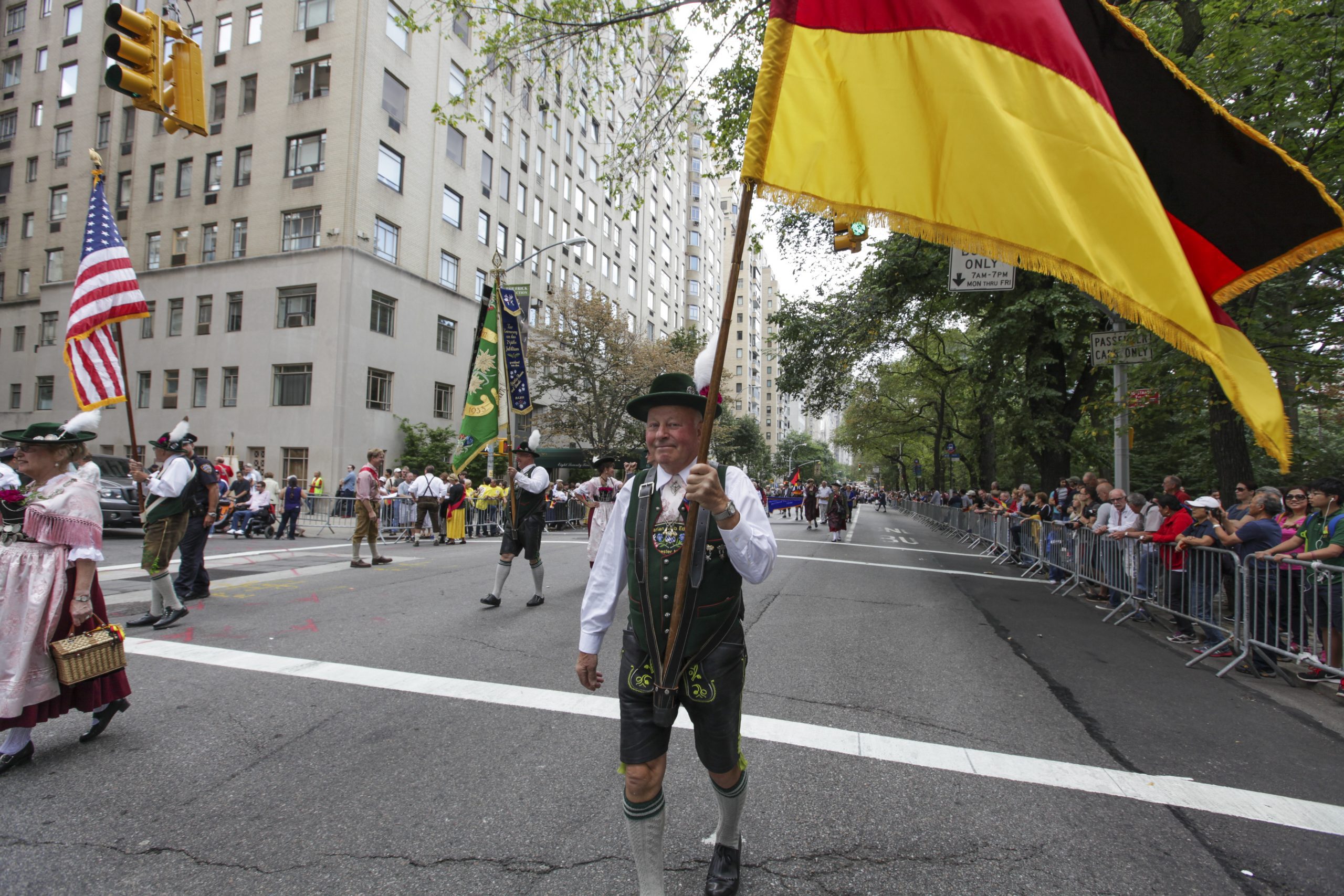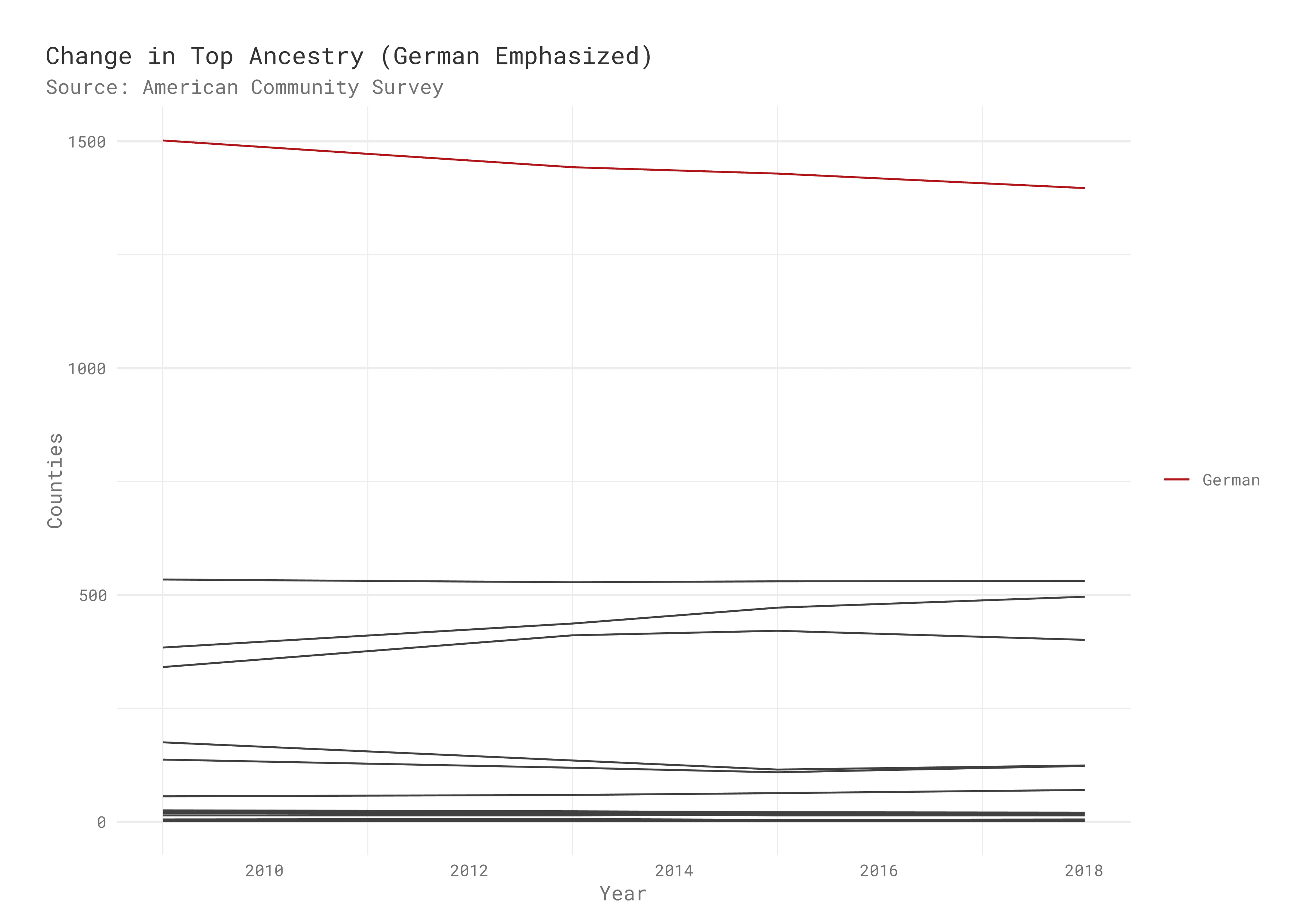Going Beyond Anglo-American Folkway Analysis

Some commentators trace American political traditions not only to particular historical figures, but to the regional cultures of the original colonies, prior to the War for Independence or the ratification of the Constitution. They argue that the American founders can meaningfully be sorted into early Anglo-American ethnic identities, based on what region in England their ancestors came from. For example, Washington is associated with the “Cavaliers,” John Adams with the “Puritans,” Thomas Paine is seen as a “Quaker,” and Andrew Jackson is considered the first “Borderer” to gain political power at the highest level in becoming the president of the United States.
This kind of cultural analysis comes out of interpretations of Albion’s Seed, an American history book by David Hackett Fischer that details the customs, or as he calls them, the folkways, of the four major groups in England that immigrated to America. What he classifies as Puritans came from East Anglia, the Cavaliers from Southern England, the Quakers from the Northern Midlands, and finally the Borderers from the border between England and Scotland, which of course lends them their name. Each of these groups had a major role in the history of England: The Cavaliers were the royalist supporters of Charles I and II; Borderers were the unfortunate defenders of the vicious divide between England and Scotland, and later were some of the major settlers of Ireland to provide support for the British versus the Irish; the Puritans and Quakers were English religious dissidents, who moved to America to practice their faith in peace. Fischer and his readers thus associate the parts of the original colonies settled by these various groups with these folkways, whether Virginia, New England, or coal country.
In many analyses using Albion’s Seed, such as essays by Tanner Greer or Scott Alexander, the implication is that the characteristics of these groups explain much of present-day American politics and culture. Examples vary from Quaker courtship culture being the most like contemporary American dating culture, to the Puritans founding many of the USA’s elite universities. Considering the current non-existence of three quarters of these Anglo folkways in the United States, however, and that some of these regional groups have not actually voted the same way for several centuries, but have voted differently based on, for example, cultural circumstances (see the political shift of WASPs), it is strange to do political analysis based on categories that the average American does not identify with.
If a strict view of the folkways analysis were to hold, Massachusetts and New England overall would have far more of a theocratic character today than they actually do. Plus in practice, we should expect Puritan identity to fade considering that later migrations occurring also influenced the culture of New England. In reality, New England has become one of the least religious parts of the country, and so it’s character has changed dramatically. A better analysis of folkway theory would track other groups that immigrated to the United States, and see what occurred to them to understand the dynamics at play. A look at the fate of the two major Hispanic groups who were also here before the United States was founded compared to the German immigrants to the American republic shows that cultural continuity and relevance is far more malleable than one might think and serves as a contrast to Anglo-focused folkway analyses.
If a folkway analysis were to hold, it would be easy to believe that counties and states sharing common ancestry voted the same way in elections and would have a similar culture. But obviously this is not the case. If it is silly today to think of a German electoral bloc in American political life, despite German ancestry being common in the United States, why do we do the same thing to other ethnic groups in the United States? Much like every other group in the country, things are far more muddled. While some groups, like the Tejanos, have maintained their culture, far larger groups, as illustrated by German-Americans, have managed to have their culture rapidly suppressed.
To see that the allegedly original Anglo-American folkways are no longer substantially relevant, we can look at American Community Survey data. Below is the top ancestry per county in the United States, according to 2018 ACS data.

With the exception of unhyphenated “American”, which can be a rough but not exact proxy for being a Borderer as commonly found in Appalachia, noticeable in the data is the lack of anything approximating Quaker, Cavalier, or Puritan as a top ancestry in the United States. In practice the top groups are German-American, African American, Hispanic, and then unhyphenated American. While these groups may often be spoken of as if uniform, in practice, it is poor thinking to accept this simplification considering the diversity found within all these groups.
It is very common to speak of a “Latino” cultural bloc in the United States, despite it being obvious that what people’s conception of being “Latino” means can be wildly different due to how they got to the United States, their economic status, and all the other types of factors that make for a good sociological study. To provide an example, there were two groups of Latinos, Californios and Tejanos, that lived in California and Texas respectively, centuries before the United States came in.
As detailed in Lands of Promise and Despair, a compendium of primary source essays on pre-United States Californian history, the colonization of California was primarily driven by missionaries establishing missions across California. The Native Americans of the region were abused terribly by Spanish soldiers, with the missionaries both protecting them and trying to acculturate them, leading to the very mixed legacy of figures like Junípero Serra. With the secularization of the missions in the 1830s, in theory the land was supposed to go to the Christianized Native Americans who lived in them. In practice, unsurprisingly, this did not happen and the Californios took over the missions and used the Native Americans as a horrifically mistreated labor force. After the declaration of the California Republic and the annexation of California, the fate of the Californios was rather mixed. While not directly oppressed, bills like the California Land Act of 1851 caused many of the Californios to lose their land to American settlers. They soon disappeared into the general Hispanic population of California.
The Tejanos could be roughly described as Spanish borderers in how they fit into the larger empire. The essay “Community and Autonomy” in a book on Tejano history called Tejano Journey 1700-1850 details the distinction between the laws Spanish Mexico had (crown authority over ranching, mercantilist economic policy) and the actual situation on the ground (isolated from the core of Spanish Mexico, so supplies were scarce). In practice the Tejanos frequently flouted the various laws the Spanish put in place. Typically, this took the form of illegal ranching, where the products of ranching were traded with the French in Louisiana for tobacco and more important manufactured goods that, in theory, they should have gotten from Mexico City, but distance made that a non-starter.
When the Anglo-American settlers of Texas revolted to form the republic of Texas, the Tejano community was split between the federalists, who were nominally on the side of the Americans due to a desire for autonomy, and a centralist faction in a debate on Mexican government policy. Unfortunately, the Americans tended to make little distinction between the two sides and to view all Tejanos as the enemy. While briefly given a say in how the Republic of Texas was run, soon the Tejanos became marginalized, but on the other hand, they did manage via societal isolation to maintain their religious and cultural traditions.
Tejano culture, in contrast to the Californios, is more prevalent in the United States, with high-level examples being the music of Selena and the existence of Tex-Mex, both of which spread far beyond the Rio Grande. According to folkways analysis, the Tejanos should have remained consistent in their political and cultural leanings, but in practice, while inhabiting one of the most Democratic parts of Texas historically, they have shifted in the opposite direction in recent years, even becoming the subject of think pieces in places such as Politico. Proving that you can’t paint a group with a single stroke, this change is far more muddled then how it has been reported, considering how some counties in the Rio Grande went far redder in 2020 and some went a little bit more blue.
A contrast to the fate of the two oldest Hispanic groups in the United States is the fate of one of the largest ethnic groups to immigrate to America, the Germans. Even today, German ancestry is very common. The exact number of counties in which the top ancestry professed is German-American is 1,397. The next few are African American at 531 counties, Hispanic at 496 counties, and American at 401 according to the 2018 American Community Survey. Even by a decline of 105 counties compared to an older ACS survey (the 2009 one) it is still by far the most common top ancestry by county in the United States.

The German-American Experience by Don Heinrich Tolzmann goes into the history of the variety of German groups that immigrated to the United States, many of which came here before there was even a Germany or even a United States, like the Palatine Germans that settled in New York, or various religious sects such as Mennonites or Anabaptists that immigrated to Pennsylvania before the Revolution. On the opposite side of the political spectrum, the Eighteen Forty-Eighters, more “radical” in comparison to the German groups who came here earlier, played a key part in American history, specifically in how many of them served the Union during the American Civil War. Unfortunately, their fondness for America did not help them preserve their culture when things turned for the worse.
The story of German immigration to the United States unhappily proves that cultural tolerance can be irrevocably changed on the flip of public opinion. As anti-German sentiment rose during the First World War for understandable reasons, one of the unintended consequences was the complete collapse of German culture in the United States. Some rapidly anglicised their names so as not to stand out. Fear of internment became a valid concern (as happened to the German Theater of Cincinnati, among other groups). German language education rapidly collapsed, and in some regions even got briefly banned, along with the usage of the German language in public.
While a folkways analysis suggests that it would be nearly impossible to enact these types of changes, unfortunately history shows this is not the case at all. While it did take the hysteria of a global war to successfully drive this change, German-American culture, unlike the more marginalized Tejanos, and despite the continued prevalence of populations of German ancestry, did not manage to bounce back from state-sanctioned repression.
Analysis of the various American folkways, while entertaining and providing insight into certain trends in current American politics, is something to be taken in moderation. Using Anglo folkways analysis as a primary lens for American history is flawed because it neglects not only to note the contributions of the many other groups who migrated to the United States but also to show how inclusion in any of these historical identities can be arbitrary. So, saying that one’s political affiliation is predetermined by the Puritans that lived in your county in the 17th century is bad thinking. But so is the assumption that the Puritans—and, for that matter, the Germans, the Tejanos, and many more—have no influence on current American politics just because their influence is no longer acknowledged.
Lars Schonander is a software engineer at Lincoln Network.